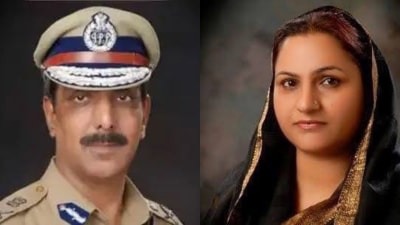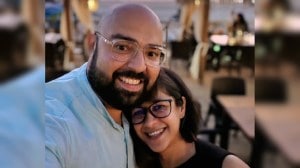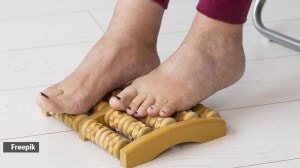The gory story
When I sat down to write Aruna's story, I never dreamt that a book would come out of it or that it would be called just that - ``Aruna's Sto...

When I sat down to write Aruna’s story, I never dreamt that a book would come out of it or that it would be called just that – “Aruna’s Story”.
Aruna has been with me since 1978. That’s when I was working as a typist and simultaneously doing my journalism and pursuing a B.Com degree. I used to keep late hours much to my mother’s chagrin who kept telling me that women should be careful. Even subsequently, when I was abroad and later, a full-fledged journalist my mother continued to worry about my hours.
Finally, one day exasperated I asked her, "Do you have nothing better to do? You said the same thing when I was here, when I was in the States and London. Has anything happened to me?" That’s when she sat down and told me Aruna’s story. The furore that the event created was one reason my mother could never forget the story. And in her retelling, neither could I. I did a story on her for a Sunday paper.
Eight years and a lifetime later I went to see Aruna again at KEM hospital. Nothing had changed for her. She was still living in her twilight zone. And I did another story on her which was read by David Davidar, the CEO of Penguin. He asked me to expand it into a book. I said, "Sorry. Aruna cannot speak, her family has abandoned her long ago and the matrons from that time are all dead". He sent a cryptic one-word note through the courier. `Try’. And I tried. I worked like a woman possessed. Eventually, all the necessary documents found their way to me. I would make the effort, jump for it, die for it, and the damn file would turn up. That is how I got her personal file in KEM, her special neurological file and even the names and numbers of people who knew her.
I found out that Aruna had a fiancee, who was a doctor. I spent a week walking the streets of Hindmata area at Dadar, and later searching every building in the Hindu Colony, asking for him. Someone told me he specialised in diabetes, and I ended up calling every doctor by that surname. The same was the case with her sister, who was supposed to have married a Naik and was selling milk. I ended up discovering a whole line of Naiks who sold milk!
By that time the entire medical fraternity and all the police stations in Mumbai had heard of this mad journalist. So, some policeman or the other would call me up with information. And through the medical fraternity I was able to locate her fiancee.
Around this time I found that June 1, 1998, would be Aruna’s 50 th birthday. I decided the book should be released on that day. This time it was David’s turn to say no, as it takes at least six months to bring out a book. He promised to try if I submitted the book by January 1, 1998. I was already into October and yet to meet people in Gujarat, a nurse in the Middle East and her people from Haldipur, near Dharwar.
I travelled like a maniac and delivered the book by January 15. In the meantime I cross-checked every single detail. Except for employing two per cent fictional writing technique, the book is completely non-fictional.We will be releasing the book on her birthday this June 1. It will be a small affair of four people, as Aruna is uncomfortable around strangers. She starts screaming when she hears a man’s voice. Aruna is not completely brain dead. For instance, she has healthy eyes but cannot see.
The very fact that she can scream and cry, shows that she has healthy vocal chords, yet she cannot speak. She hasn’t walked for the last 25 years and her bones have twisted. Her teeth are rotting. The hospital has to stitch special clothes for her as her skin is like fine parchment and gets easily bruised. But she will have a new dress for her birthday. Meanwhile the rapist, Sohanlal Bharta Walmiki, a sweeper in the hospital, was not convicted for rape.
It was one of those terrible travesties of justice where he was jailed for robbery and attempt to murder. He is said to be working even today as a ward boy under an assumed name in a Delhi hospital.





- 01
- 02
- 03
- 04
- 05


























